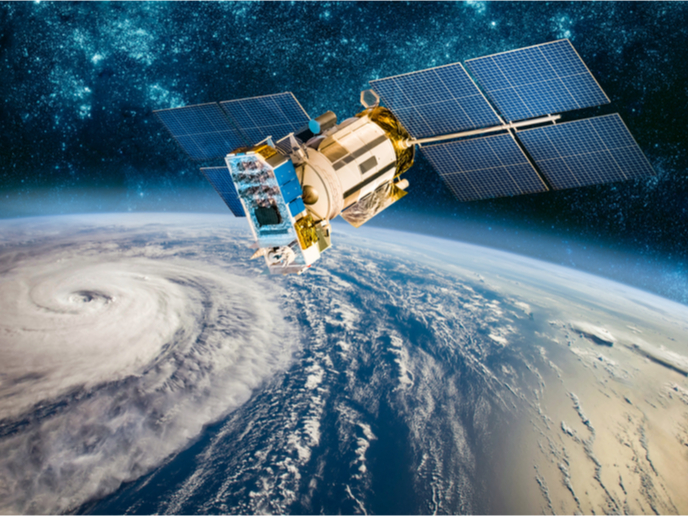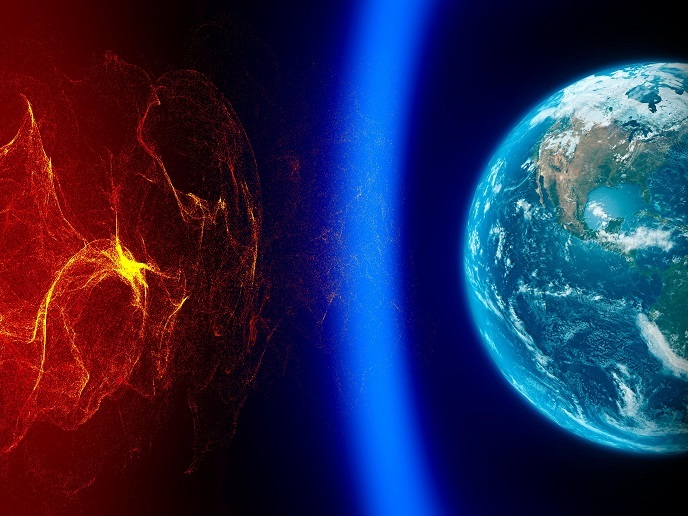Taking the twinkle out of GNSS signals
Global navigation satellite system (GNSS) technology is deeply embedded in our everyday lives. These systems communicate continuously with our smartphones, activity trackers, cars and computers, helping us find directions and shortcuts, locate the nearest restaurant or petrol station and forecast rain more accurately. A lesser-known use is the tracking of container and parcel movements throughout their shipping routes. Mobile phone networks also use GPS time to synchronise their base stations.
Overcoming what undermines the radio signal strength
Despite keeping our world running in ways we sometimes barely realise, GNSS signals are also increasingly vulnerable. GNSS signals are radio waves transmitted from satellites orbiting the Earth at an altitude of 20 000 km. The transmitted signal is extremely weak by the time it reaches the Earth's surface. Researchers are trying to develop more sensitive receivers to capture these faint signals. Funded by the Marie Skłodowska-Curie Actions programme, the NAVSCIN project worked on improved strategies to mitigate a common issue in received GNSS signals: scintillation(opens in new window). “This phenomenon is familiar to most people through the twinkling of starlight as it crosses the atmosphere. Under certain conditions linked to the Sun’s activity and the Earth’s magnetic field, the radio waves traversing the ionosphere can be severely disrupted. Small-scale changes in the density and composition of the plasma of free electrons in the ionised upper atmosphere cause rapid and intensive fluctuations of the signal amplitude and phase,” notes project coordinator Adrià Rovira García. “To circumvent the undesirable effects of ionospheric turbulence, it is first necessary to understand its nature,” adds Rovira García. To this end, the researcher conducted a statistical analysis of scintillation occurrence in terms of frequency, severity and geographical locations. The results served as input to define a procedure for detecting the scintillation impact on the GNSS signals, namely dealing with the so-called ‘cycle slips’(opens in new window) on GNSS measurements. “Detecting and repairing cycle slips is challenging: Their size is rather small, approximately 20 cm, and they can appear simultaneously in different satellites,” explains Rovira García.
GNSS receivers robust against radio scintillation
The researcher developed an improved methodology for assessing different models to correct the detrimental ionospheric effects on the GNSS signals. Its main advantage is the use of geodetic techniques and standard geodetic receivers that are freely available and sample the GNSS signals every second. By contrast, customary receivers eliminate low-frequency signals using blind signal processing techniques that require at least 50 samples per second. “Converting any standard receiver into a scintillation monitoring station is a major breakthrough that is changing what is currently known about scintillation,” Rovira García notes. Measuring how ionospheric perturbations affect the GNSS signal is certainly not an easy feat. NAVSCIN demonstrated that once scintillation effects are repaired or otherwise mitigated, GNSS positioning and timing accuracy improves dramatically. Project results have been disseminated in 11 articles published in peer-reviewed journals and at 5 international conferences. “Our research serves as a stepping stone to improving the performance of over 8 billion GNSS devices currently used around the world,” concludes Rovira García.







